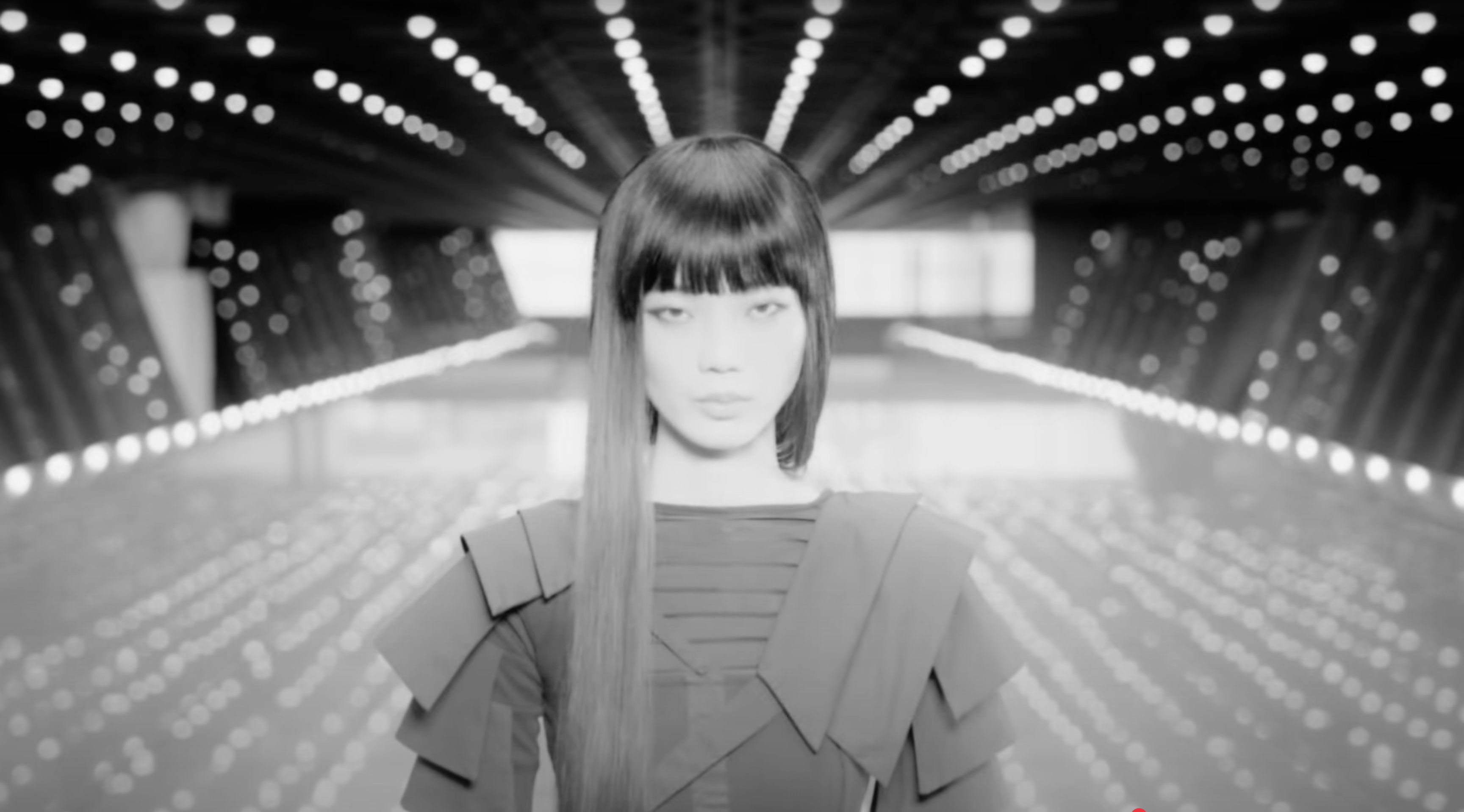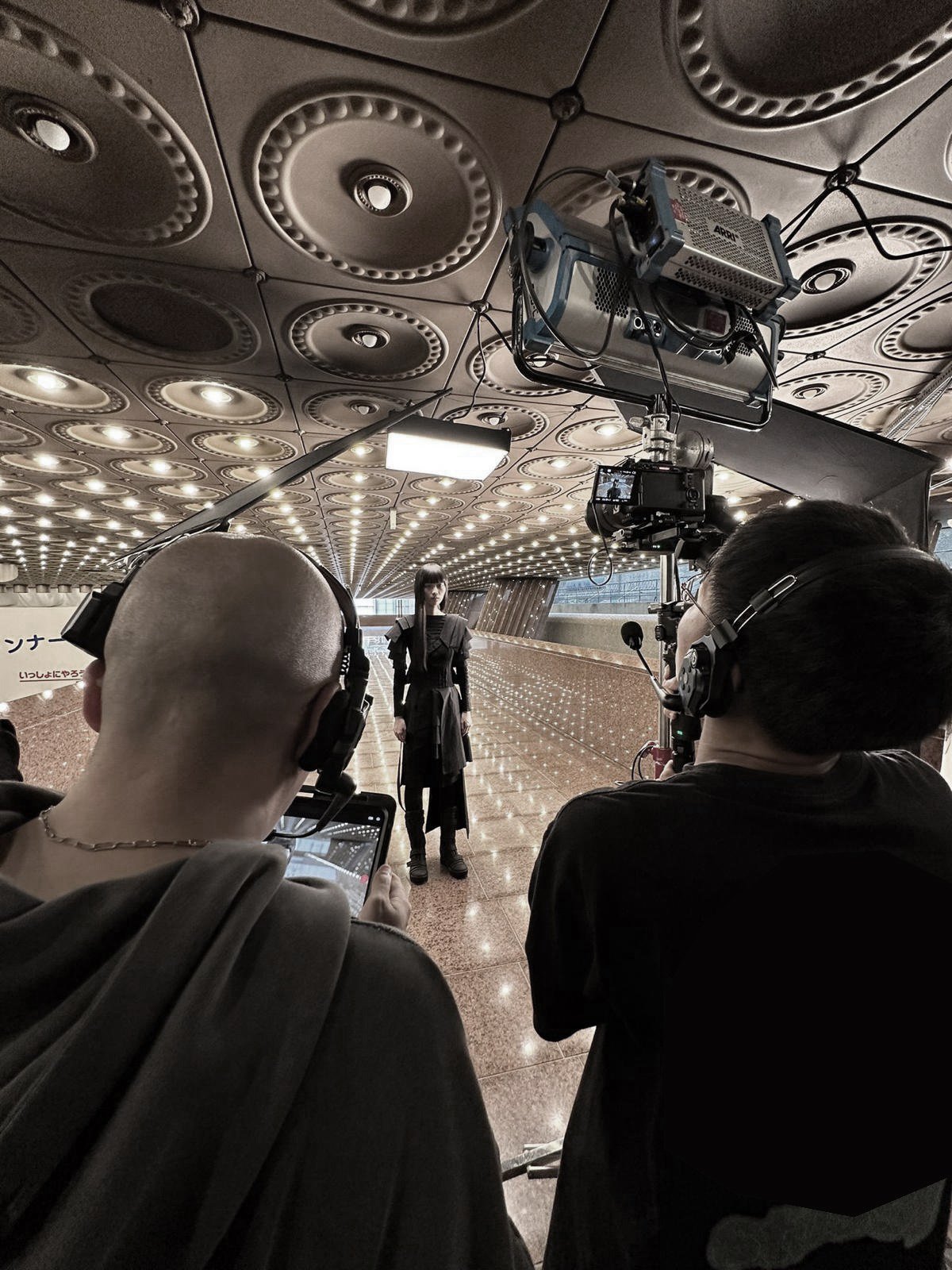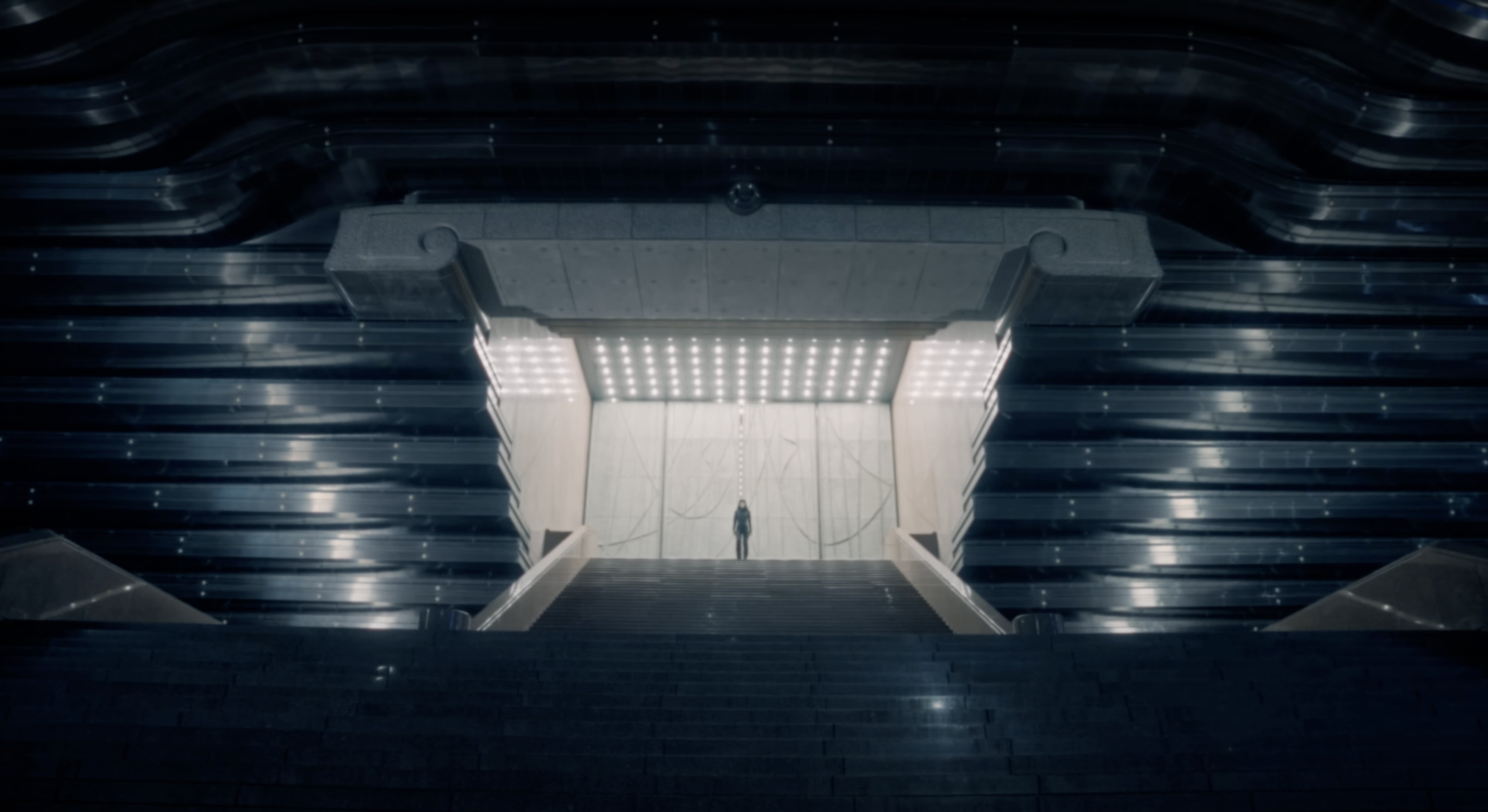KANNAGARA – The Eternal Flow of Life
Known for pushing the boundaries of storytelling through fashion, the brand has traversed dystopian landscapes and barren deserts, always seeking the raw essence of creation. Now, the narrative shifts—into the architectural heartbeat of Tokyo, where the past and future collide.
At the center of this journey stands Reiyukai Shakaden, a modern temple that feels almost otherworldly, rising from the urban sprawl like a monolithic gateway between realms. This wasn’t just a location—it was an omen. Originally suggested for an entirely different project, the moment DEMO and TONO saw it, the alignment was undeniable. Fate had already chosen the stage.
THE RITUAL OF MOVEMENT
KANNAGARA is a transmission, a portal, a coded language of motion and form. It is about the endless loop—the wheel of time, life, and death, turning over and over in an infinite procession. On the temple’s stairs, figures dressed in black and white flow like a mechanical tide, their movements deliberate, precise. In this controlled symmetry, the inevitable unfolds—the journey toward transformation.
This ritual is embodied by an electrifying cast. Hikaru Kawasaki, one of Japan’s most renowned conceptual dancers, moves with the sharp precision of a warrior, fusing martial arts and fluidity into an unspoken narrative. Alongside him, Ayaka Hikima and Taishi Suzuki—a top model veiled in anonymity beneath a helmet— navigate the space like echoes of past and future selves.
Every step is a pulse in the cycle. The dancers in white move with lightness, charged with renewal and ascension.
Those in black bear the weight of the past, their gestures heavy with resistance, with return. The air vibrates between them, charged with the tension of existence itself.
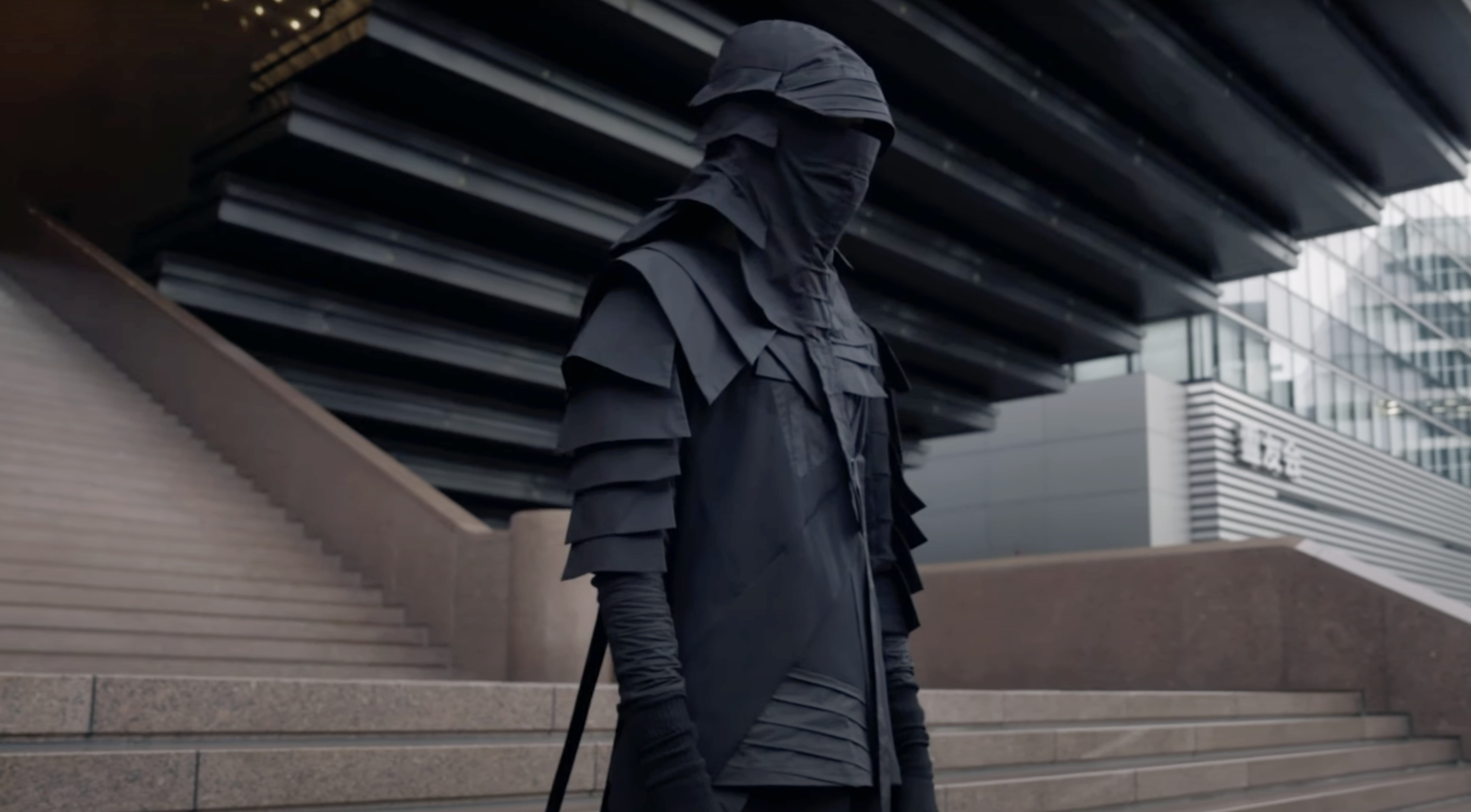
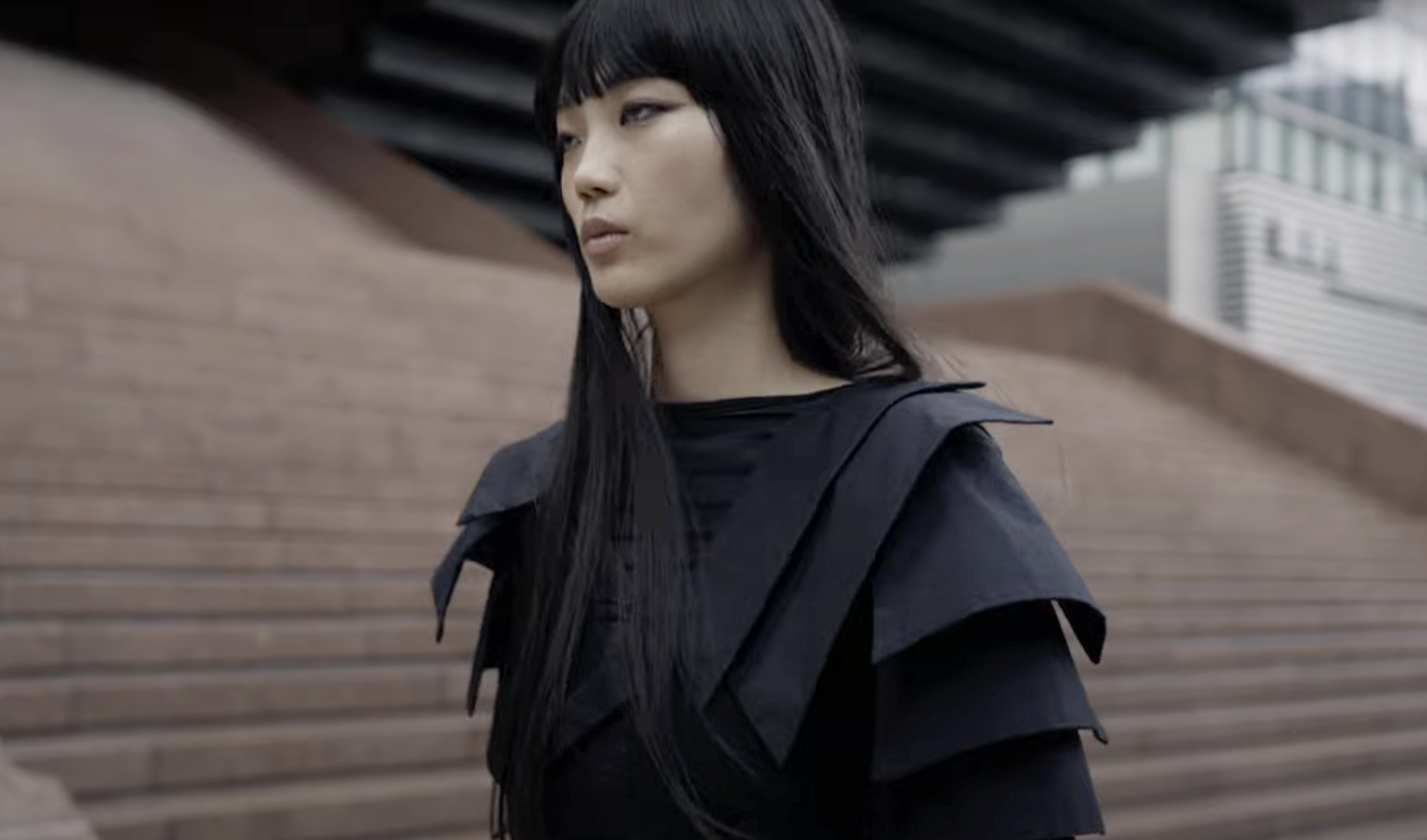
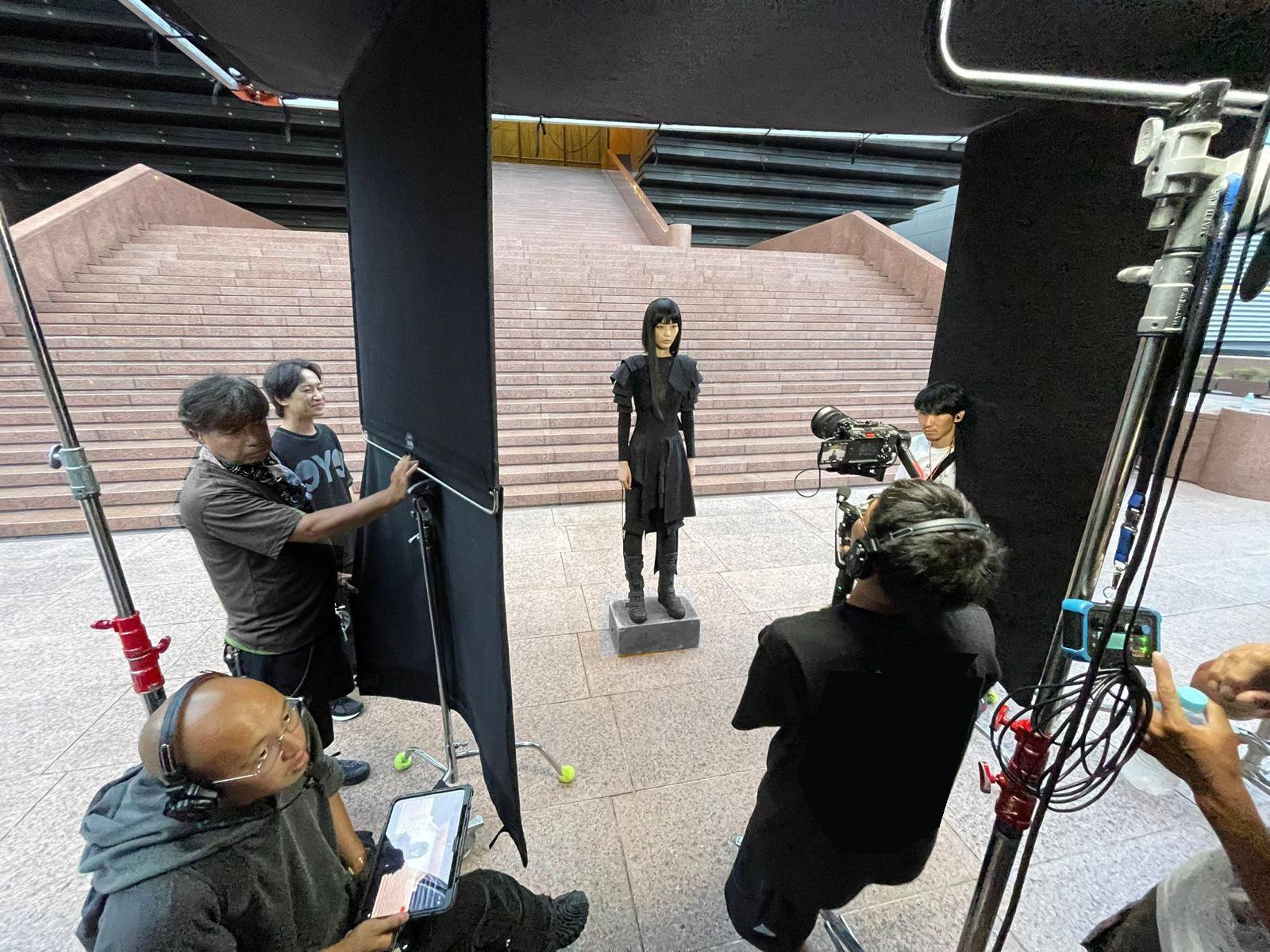
CREATIVITY FORGED THROUGH BOUNDARIES
DEMOBAZA’s signature ability to create from constraints was once again put to the test. The production was directed remotely by DEMO and TONO, executed by Boa Campbell, who seamlessly orchestrated every detail—from the stills to the video production itself. Visionary cinematographers Kito and Coziestone, the duo behind The Source, flew in from Mongolia, bringing their distinct aesthetic to the piece. But filming within this sacred space came with its own set of rules. No drones. No cranes. No smoke machines. Stripped of the usual cinematic crutches, the team leaned into pure composition, light, and motion—crafting a film that thrives on raw, unfiltered presence.
The styling was led by Yoshi Miyamasu, a name synonymous with avant-garde editorial work. Even with his towering reputation, he was drawn to the project purely for the concept—an alignment of energy rather than transaction. The entire beauty team followed suit, sculpting a look that felt elemental, yet entirely beyond time.
THE PORTAL CLOSES, THE JOURNEY CONTINUES
The final scene is a rupture. The protagonist steps beyond the temple walls, back into the city’s electric hum. The ritual has ended. The portal has closed. But something lingers—an imprint, an awareness, a fracture in perception. She removes her glasses, as if shedding an illusion, her eyes now reflecting something altered, something seen. The temple lights fade into darkness behind her.
But the cycle continues. The wheel turns again.
"Life repeats itself. Unless you become conscious, it will continue to repeat—like a wheel: the wheel of life and death, the wheel of time. And it goes on and on. Only when you become aware of the pattern you can break free. Only when you remain open to the divine flow does everything begin to make sense. Transformation is inevitable."
This is KANNAGARA—the rhythm of all things, the breath between worlds, the silent force pulling us home.


